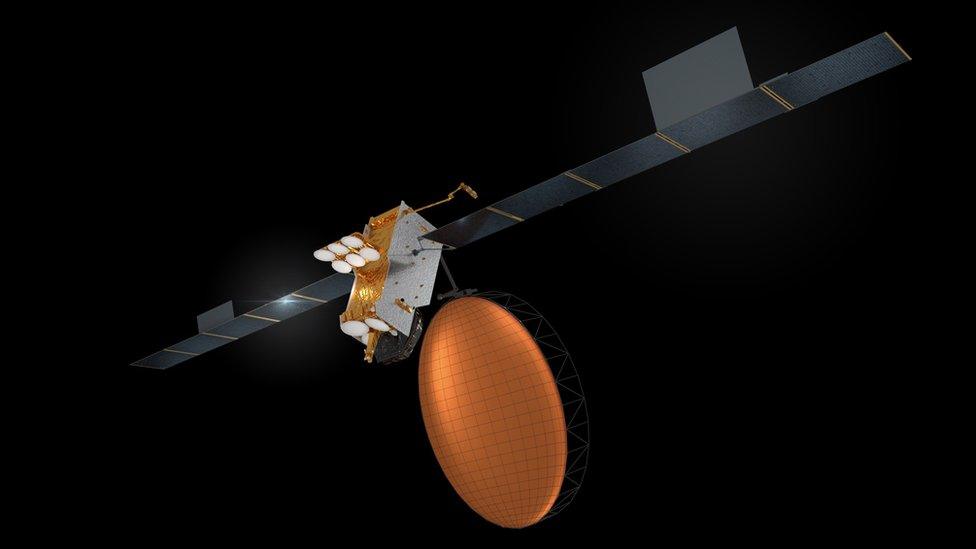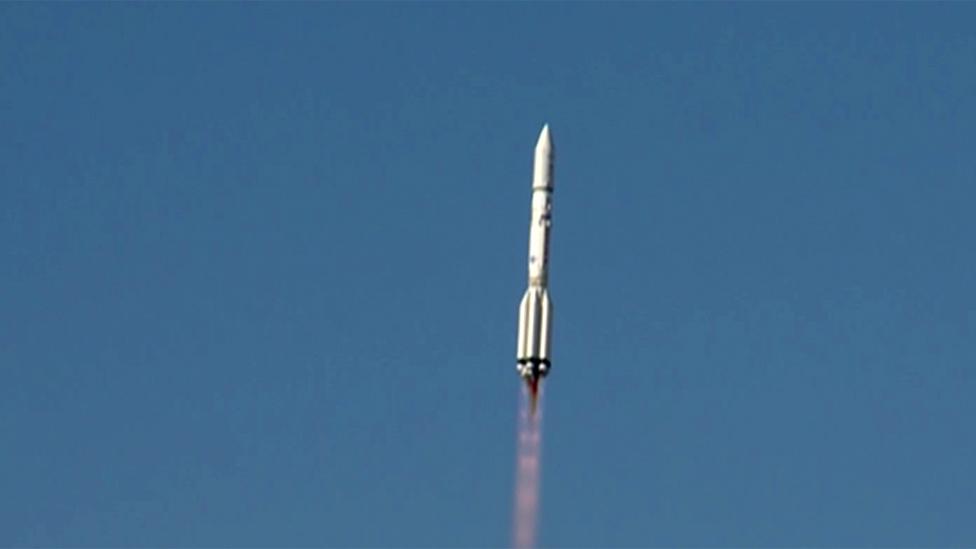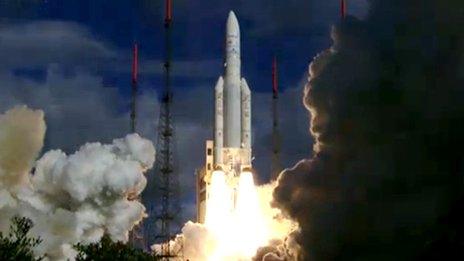Inmarsat places big contract with Airbus for new satellites
- Published

The Inmarsat-6 satellites will each have a 9m aperture L-band antenna
Inmarsat, the British satellite telecommunications company, has awarded the contract to build its next-generation constellation to Airbus.
Two spacecraft have been ordered at a cost of roughly 550m euros (£405m).
They will be built at the aerospace giant's factories in Portsmouth and Stevenage in southern England.
Inmarsat specialises in providing mobile connections to ships, planes, oil and gas platforms, and the broadcasting industry.
The new spacecraft will be known as the Inmarsat-6 series. They will update services currently offered in the L-band part of the radio spectrum.
These connections are handled today by the Inmarsat-4 series, which was launched in 2005. The expectation is that these earlier platforms will be operational until at least 2020, by which time the I-6s should be ready for lift-off.
Inmarsat's decision to place the order with Airbus is a major boost for UK space manufacturing.
The telecoms company is the world's biggest player in its field, and so the Airbus workers in Portsmouth and Stevenage will see the contract as a tremendous endorsement of their skills and expertise.
It will also be regarded as a very positive return on the strategy pursued by ministers and the UK Space Agency, who have targeted R&D investments in the telecoms sector.
This has seen, for example, the development of state-of-the-art digital signal processors for satellites that can channel significant bandwidth and power to specific locations on the ground at the drop of a hat.
In addition to being more capable than the I-4s, the I-6s will differ in two key respects.
One is their frequency of operation. As well as the L-band, which is where Inmarsat has many legacy services, the new satellites will carry a Ka-band payload.
This higher frequency part of the radio spectrum is where much of the new sector growth will occur - such as in-flight connections for aeroplanes. Inmarsat recently launched an I-5 series of satellites. These all operate in Ka.
The other big difference from the I-4s, and indeed the I-5s, will be the new satellites' architecture. They will be what are called "all-electric" spacecraft.
This means they will use an ion engine to manoeuvre themselves once they come off the top of the launch rocket.
This is normally done with a large chemical thruster, but a significant mass saving can be made if the final orbital positioning is done using an engine that spits out a stream of charged gas.
Such ion engines, although extremely efficient, do however take longer to achieve the task in hand, resulting in a delay of several months to get the satellite on-station.
The plus side for the satellite owner is that they can use the mass saving either to select a smaller, cheaper rocket or to add additional payload capability.
Jonathan.Amos-INTERNET@bbc.co.uk, external and follow me on Twitter: @BBCAmos, external
- Published29 August 2015

- Published25 July 2013
